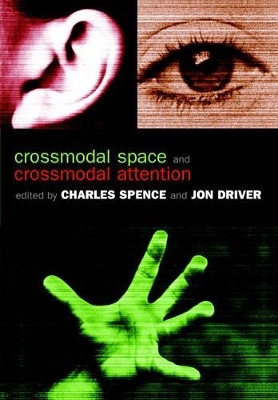
Crossmodal Space and Crossmodal Attention
Oxford University Press (Verlag)
978-0-19-852486-1 (ISBN)
Many organisms possess multiple sensory systems, such as vision, hearing, touch, smell, and taste. The possession of such multiple ways of sensing the world offers many benefits. These benefits arise not only because each modality can sense different aspects of the environment, but also because different senses can respond jointly to the same external object or event, thus enriching the overall experience - for example, looking at an individual while listening to them speak. However, combining information from different senses also poses many challenges for the nervous system.
In recent years there has been dramatic progress in understanding how information from different sensory modalities gets integrated in order to construct useful representations of external space; and in how such multimodal representations constrain spatial attention. Such progress has involved numerous different disciplines, including neurophysiology, experimental psychology, neurological work with brain-damaged patients, neuroimaging studies, and computational modelling.
This volume brings together the leading researchers from all these approaches, to present the first integrative overview of this central topic in cognitive neuroscience.
1. Development of multisensory spatial integration ; 2. Crossmodal spatial interactions in subcortical and cortical circuits ; 3. A system of multimodal areas in the primate brain ; 4. Neuropsychological evidence for multimodal representations of space near specific body parts ; 5. Multimodal spatial representations in the primate parietal lobe ; 6. A computational neural theory of multisensory spatial representations ; 7. The psychology of multimodal perception ; 8. Crossmodal spatial attention: evidence from human performance ; 9. Electrophysiology of human crossmodal spatial attention ; 10. Functional imaging of crossmodal spatial representations and crossmodal spatial attention ; 11. Exogenous spatial-cuing studies of human crossmodal attention and multisensory integration
| Erscheint lt. Verlag | 1.6.2004 |
|---|---|
| Zusatzinfo | numerous figures and black and white photographs |
| Verlagsort | Oxford |
| Sprache | englisch |
| Maße | 169 x 239 mm |
| Gewicht | 575 g |
| Themenwelt | Geisteswissenschaften ► Psychologie ► Allgemeine Psychologie |
| Geisteswissenschaften ► Psychologie ► Biopsychologie / Neurowissenschaften | |
| Geisteswissenschaften ► Psychologie ► Test in der Psychologie | |
| Geisteswissenschaften ► Psychologie ► Verhaltenstherapie | |
| Naturwissenschaften ► Biologie ► Zoologie | |
| ISBN-10 | 0-19-852486-2 / 0198524862 |
| ISBN-13 | 978-0-19-852486-1 / 9780198524861 |
| Zustand | Neuware |
| Haben Sie eine Frage zum Produkt? |
aus dem Bereich


